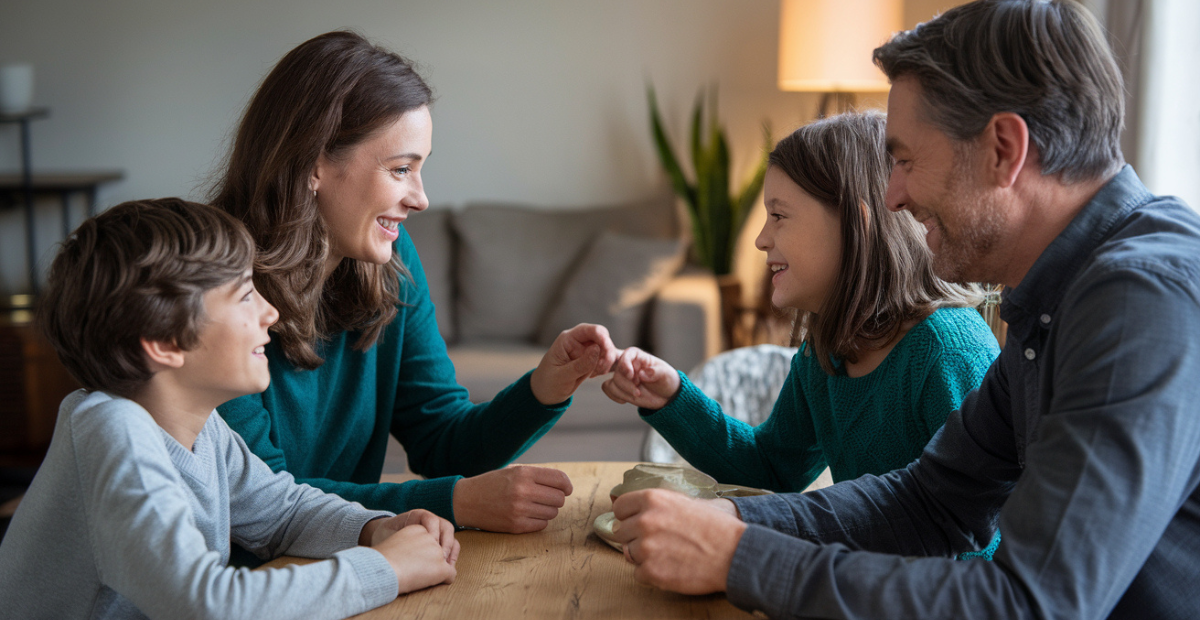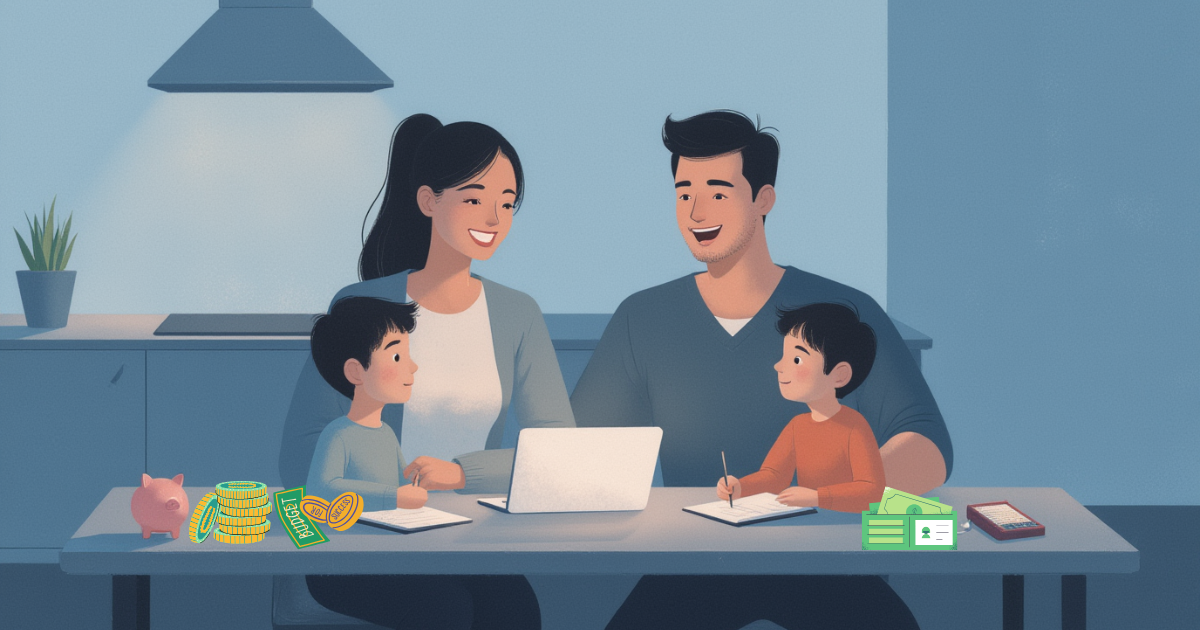Unlock Better Relationships with These Family Communication Skills
Family Communication Skills are the cornerstone of strong, healthy, and lasting relationships. Whether you’re a parent striving to better connect with your children, a spouse working through challenges, or a family member trying to bridge generational gaps, effective communication in families is crucial.
In today’s fast-paced world, it’s easy for conversations to be replaced with texts, misunderstandings to escalate, and meaningful connections to weaken. But the good news? With the right skills, you can transform how your family communicates—strengthening bonds, resolving conflicts, and creating a more supportive environment.
This guide dives deep into the most effective Family Communication Skills that truly work. Let’s explore how to improve family communication and build strong family connections that last a lifetime.
Why Family Communication Skills Matter
Healthy communication is the foundation of emotional safety and trust within a family. When family members feel heard and understood, conflicts reduce, empathy increases, and relationships thrive. According to a report from the American Psychological Association, families with open communication patterns are more resilient and adaptive during stressful times.
The Hidden Costs of Poor Family Communication
- Misunderstandings that lead to unnecessary conflicts
- Emotional distance and feelings of isolation
- Unresolved tension that impacts mental health
Benefits of Effective Communication in Families
- Strengthens emotional bonds
- Builds mutual respect and trust
- Improves conflict resolution
- Enhances overall family wellbeing
1. Practice Active Listening
Active listening is more than just hearing; it involves being fully present in the conversation without interrupting or judging.
How to Practice It:
- Maintain eye contact
- Use non-verbal cues like nodding
- Reflect back what the speaker says (“What I hear you saying is…”)
- Avoid distractions like phones or TV
Pro Tip: Practice active listening during family meals or weekly check-ins to build a habit of open dialogue.
2. Use “I” Statements Instead of Blame
Using “I” statements helps to express feelings without accusing or putting others on the defensive.
Examples:
- Instead of “You never help around the house,” say “I feel overwhelmed when I don’t get help with chores.”
- Instead of “You’re always late,” say “I get anxious when plans don’t start on time.”
This technique reduces defensiveness and opens the door for constructive conversations.
3. Schedule Family Meetings
One of the most effective ways to foster open dialogue is through regular family meetings.
Benefits:
- Provides a safe space to voice concerns
- Helps resolve conflicts before they escalate
- Encourages problem-solving as a team
Tip: Keep meetings short (15–30 minutes), and involve everyone—even kids.
4. Teach Emotional Vocabulary to Kids
Developing communication skills for parents and kids starts with language. Children often act out when they don’t have the words to express feelings.
How to Build Emotional Vocabulary:
- Name emotions during everyday situations (“You seem frustrated that we have to leave the park”)
- Use books or storytime to identify feelings in characters
- Play emotion-based games like “feelings charades”
Helping kids identify and express emotions early on lays the groundwork for strong communication skills later in life.
5. Encourage Open-Ended Questions
Replace yes-or-no questions with open-ended ones to deepen conversations.
Try These:
- “What was the best part of your day?”
- “How did that make you feel?”
- “What do you think we can do better as a family?”
This approach shows interest and invites family members to share more openly.
6. Set Digital Boundaries
Technology is both a blessing and a barrier to communication. Setting digital boundaries encourages more face-to-face interaction.
Ideas for Healthy Digital Habits:
- No devices during meals or family time
- Create a family charging station to avoid bedtime screen use
- Schedule daily tech-free hours
7. Model Respectful Communication
Children learn more from what you do than what you say. Demonstrate respectful communication through tone, words, and behavior.
Tips for Parents:
- Avoid yelling or sarcasm
- Apologize when you’re wrong
- Show appreciation and kindness regularly
When parents model these behaviors, kids are more likely to mirror them in their own interactions.
Building Strong Family Connections: A Daily Practice
Building strong family connections doesn’t happen overnight. It requires intentional daily practices that prioritize understanding, empathy, and shared time.
Daily Habits That Help:
- Eat meals together
- Share highs and lows of the day
- Do fun activities or hobbies as a family
- Create rituals like Friday movie nights or Sunday walks
These consistent practices help reinforce the emotional ties that bind families together.
Quick Table: Dos and Don’ts of Family Communication
| Dos | Don’ts |
| Use active listening | Interrupt or dismiss |
| Express feelings with “I” statements | Use blame or accusations |
| Ask open-ended questions | Rely on yes/no questions |
| Set tech-free time | Allow screens during key moments |
| Model respectful behavior | Raise voices or use sarcasm |
Frequently Asked Questions (FAQ)
Q1: What are the most important Family Communication Skills?
The most important skills include active listening, using “I” statements, open-ended questions, and emotional awareness. These encourage empathy and clarity.
Q2: How can I improve communication with my teenager?
Give them space to speak without judgment, avoid lectures, and use moments like car rides or meals for natural conversation. Respect their need for independence.
Q3: What if my family doesn’t want to talk?
Start small with simple daily check-ins. Use games, shared activities, or light conversation starters to gradually open up communication channels.
Q4: Are family meetings really effective?
Yes! When done consistently and respectfully, they help families feel heard, valued, and united in solving problems.
Conclusion: Strengthen Bonds with Better Communication
Mastering Family Communication Skills isn’t just about talking—it’s about connecting. With the right tools, you can foster a home filled with trust, empathy, and resilience.
Start small: pick one tip and try it today. Then build from there. Your relationships will thank you.
We’d love to hear from you—what communication habits work best in your family? Drop your thoughts in the comments or share this post to inspire someone else.
Any other feedback or suggestions?
There are no reviews yet. Be the first one to write one.







